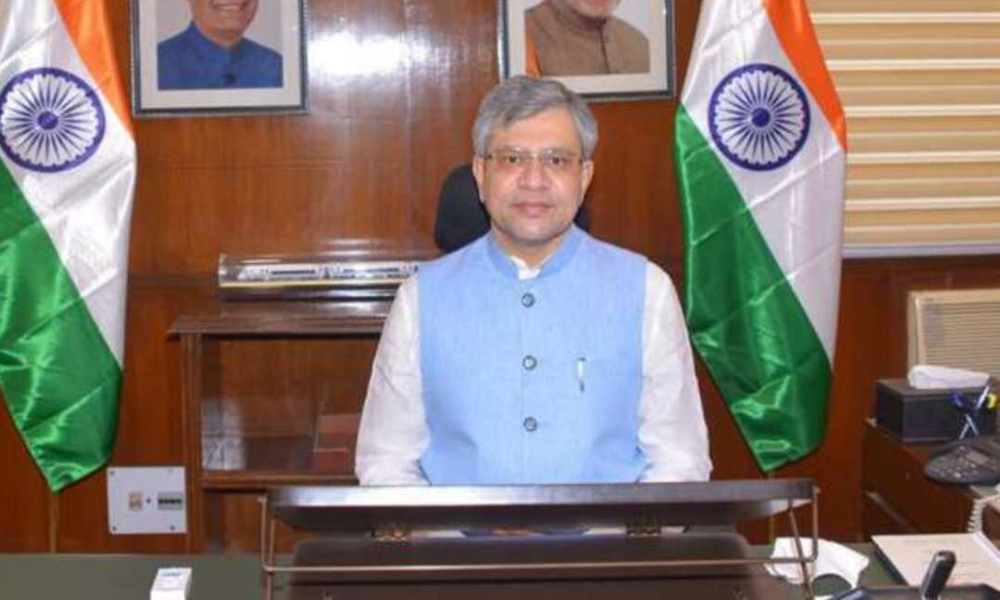
Image Credits: India Tv
How Technology Has Enabled Marginalized Sections To Avail Benefits Of Govt Schemes
Writer: Anuran Sadhu
A post grad journalism student of SIMC, Pune with a passion for using words to get my message across in the most unique ways possible and curiosity is the force that drives me to learn and experience more every day.
India, 28 July 2021 11:51 AM GMT
Editor : Ankita Singh |
A literature lover who likes delving deeper into a wide range of societal issues and expresses her opinions about the same. Keeps looking for best-read recommendations while enjoying her coffee and tea.
Creatives : Ankita Singh
A literature lover who likes delving deeper into a wide range of societal issues and expresses her opinions about the same. Keeps looking for best-read recommendations while enjoying her coffee and tea.
The Minister for Electronics and IT Ashwini Vaishnaw said that using technology and platforms like MyGov has enabled the masses to avail the full benefits of the government schemes and programs.
MyGov, the citizen engagement platform was launched by the government of India on July 26 2014. On Monday, while addressing an event to celebrate the seven years of the unique government's initiative, the Minister for Electronics and IT Ashwini Vaishnaw said that using technology and platforms like MyGov has enabled the masses to avail the full benefits of the government schemes and programs. It has brought unprecedented change and inclusive development, he added.
Ashwini Viashnaw further added that the country's youth has proactively reached out to the government with their ideas and suggestions through MyGov. He said that the platform is now entering its eighth year with renewed vigour, according to The Hindu. Viashnaw further said the efficient use of technology and platforms has also helped the poor and marginalized get the benefits of the various government schemes.
The IT Minister highlighted that the government's focus on domestic manufacturing, growing internet penetration, digital payments, e-marketplace, biometric Adhaar card and many other schemes and programmes have brought changes to people's lives and have set forth an inclusive development. It has also reached out to the remotest parts of the country, he added.
Uttar Pradesh Launches Its Own MyGov
The Uttar Pradesh government also launched the 'MyGov- Meri Sarkar' portal on July 27. According to Chief Minister Yogi Adityanath, the government will receive feedback from people and inform them about the benefits of various government schemes. Adityanath also noted that the use of technology would bring more transparency and ensure the benefits of the schemes reached out to the masses.
The Chief Minister said that UP has harnessed technology effectively in fair price shops and state government portals and increased the efficiencies, which has led to 15 crore people get the full benefit of the Public Distribution System (PDS) system. Technology plugs leakages and helps in tackling corruption, he added.
Other Tech Platforms Also Had Similar Impact
Technology has been a great enabler for the delivery of services and business, and governance. The Digital India Mission was launched in 2015 to ensure that government services are made readily available to the citizens electronically. It aimed at improving online infrastructure, increasing internet connectivity and digitally empowering the country.
Under the Digital India programme, some noteworthy achievements have brought the government closer to ordinary citizens.
Pradhan Mantri Gramin Digital Saksharta Abhiyan
PMGDISHA is one such scheme that has helped India make strides towards digital literacy. Launched in February 2017, the scheme witnessed 3.62 crore enrolments till 2020. A total of 263319 training centres were set up across India to improve digital literacy.
Close to 3 crore students completed training through the training facilities. The scheme that plans to cover six crore households in rural India to make them digital literate has been supported by UNESCO, Corporates, civil society, and academic institutions.
Greater Financial Inclusion With JAM Trinity
The success of JAM Trinity has also been noteworthy. The Pradhan Mantri Jan Dhan Yojana, the first pillar of JAM Trinity, added around 42.4 crore bank accounts in the last seven years, Ajay Bhusan Pandey, CEO of Unique Identification Authority of India, told The Indian Express.
It is owned by 28 crore people residing in rural India. The Aahdaar card, which is seen as the other pillar of JAM Trinity, facilitated bank account linkages to mobile numbers. That has helped people know account status and receive scholarships and fellowships. It has also helped them acquire fertilizer and LPG subsidies, disability pensions and farm income support directly into their bank accounts.
UPI's Boost To India's Digital Economy
The Unified Payments Interface, an instant real-time payment system that the RBI regulates, has boosted the digital economy during the pandemic. As reported by Fortune India, the National Payments Corporation of India (NPCI), which developed the system and manages it, reported a threefold increase during the last fiscal (2020-21) in both the number of transactions and the value.
HAs per the latest data released in March 2021, the total volume has jumped to 2,732 million transactions, worth ₹5,04,886 crore, significantly contributing to making India one of the fastest-growing digital economies globally. When the platform began operation, only 21 banks were live on UPI. Now, 216 banks are on board with UPI, a significant rise from 153 banks in April 2020.
Also Read: Three Bengaluru-Based Startups Led By Women Win MyGov's Shri Shakti Challenge Award
 All section
All section













